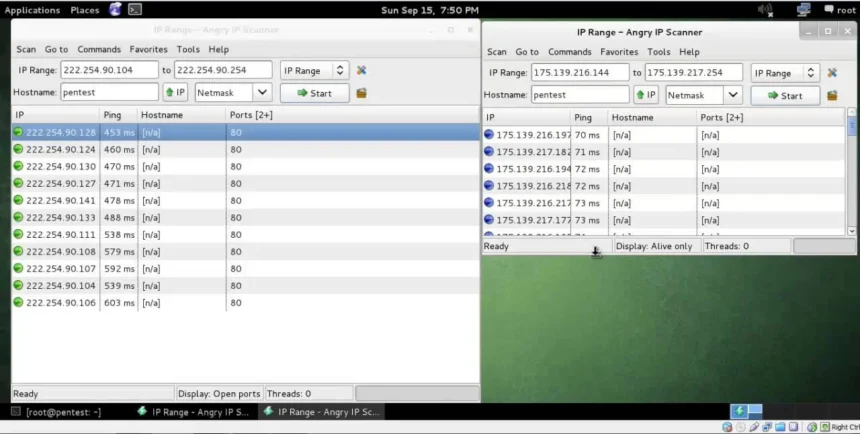When one searches “sniffi3s,” the results yield minimal substance. Some observations:
- The domain sniffi3s.com is currently listed as for sale / parked — the site content is a placeholder.
- Another domain ww38.sniffi3s.com returns a similar parked or minimal placeholder page.
- The domain listing shows it is offered on domain marketplace platforms such as Above.com.
- There is no known, credible website, social media presence, or application under the name “sniffi3s” that shows active content or recognized services.
Because of this, “sniffi3s” is likely either:
- A domain that was previously active but has now been retired, parked, or shut down.
- A placeholder for future use or pending resale.
- A mis-spelling or alias of some other name (for example, “Sniffies”).
In such cases of minimal digital footprint, caution and verification become essential before engaging with anything related to that string.
Possible Associations: Mistyping, Aliases & Confusing Names
Given how “sniffi3s” looks, we should consider whether it’s an alias, typo, or linked to better-known names. Some possibilities:
1. Confusion with “Sniffies”
- There is an adult geosocial networking app named Sniffies (sniffies.com).
- Someone might have typed or heard “sniffi3s” instead of “sniffies,” leading to misguided searching.
- If the context where you saw “sniffi3s” is in social, chat, or obscure websites, it may be a disguised reference to “Sniffies” or a pun/variant.
2. Domain parking / domain wants to be sold
- The fact that sniffi3s.com is for sale suggests it might have been built (or planned) but never fully launched or now is defunct.
- Sometimes domain squatters hold names resembling known brands or keywords to capitalize on typo traffic.
3. A private or internal alias / subdomain
- “sniffi3s” could be a private project name, internal tool, or alias used in closed communities, not publicly indexed.
- It might be part of a subdomain, code name, or obfuscated link.
4. Expired / discontinued service
The domain may once have housed a service or app named “sniffi3s,” but later discontinued or taken offline, leaving only parking pages.
Because of the absence of relevant archived content or caching results (e.g. via Wayback Machine), it’s difficult to recover what “sniffi3s” once was (if anything).
How to Investigate Unknown Terms Like “sniffi3s”
If you want to dig deeper to identify what “sniffi3s” is or was, here’s a structured approach:
1. Use the Wayback Machine / Internet Archive
Check archived snapshots of sniffi3s.com (or ww38.sniffi3s.com) to see if earlier content existed. Sometimes deleted sites leave traces in archived versions.
2. DNS / WHOIS / Domain History Tools
- Look up the WHOIS record of sniffi3s.com to see when it was registered, who registered it (if not private), and its registration history.
- Use tools like DomainTools or WhoisHistory to see past domain handlers, DNS changes, hosting history, or IP resolution.
3. Search for partial matches / substrings
Search for sniffi3, sniffi, or other variants. This sometimes reveals mis-typed or legacy references.
Also check in search engines, code repositories (GitHub, GitLab) for “sniffi3s” references.
4. Check social media / developer forums
Search on Twitter, Reddit, Discord, or communities where small or niche software, apps, or domains are discussed. Someone might have mentioned “sniffi3s” in passing.
5. Monitor for resurgence
Set alerts (Google Alerts) or use domain monitoring tools to see if sniffi3s resurfaces (e.g. new content, new DNS).
6. Check backlinks
Use SEO tools (Ahrefs, SEMrush) to see if any sites link to sniffi3s.com. That might show when it was active or associated sites.
7. Investigate domain marketplace listing
Since it’s on sale, sometimes marketplace listing descriptions contain history or intended purpose. Check the seller’s notes or comments for clues.
Using these steps, you may recover what “sniffi3s” was or what it was intended to be.
Risks & Caution When Dealing with Obscure Domains / Names
Encountering names like “sniffi3s” that are inactive, parked, or ambiguous carries certain risks. Be careful in these areas:
Phishing / Rogue Redirection
- Some parked domains or expired domains can be hijacked or repurposed to malicious content (redirects, phishing pages).
- If you click a link to sniffi3s.com expecting something known, you could be redirected to a malicious site.
Malware / Hidden Downloads
- If any downloads are offered (e.g. from previously active “sniffi3s” pages), they may carry malware or trojan payloads.
- Always scan unknown files and use sandbox environments.
Domain squat / Typosquatting Risks
- Domains that mimic known brands (typos, small changes) might be traps. Users mistyping “sniffies.com” might land on sniffi3s.com.
- Typosquatting is a common tactic in fraud or ad revenue schemes.
Privacy & Data Exposure
- If a formerly active site had user accounts, old data leaks or caches might exist and be accessible.
- Visiting or interacting may accidentally expose personal data if someone resurrects the domain maliciously.
False Expectations
Sometimes people expect a domain to return known service but find nothing. Mistaking a parked name for an active app or service can lead to disappointment or misinformation.
Thus, when an ambiguous name appears, approach carefully, without giving personal or login info, and verify authenticity before engagement.
Interpreting Minimal Digital Footprint: What It Usually Means
When a name yields almost no information, that often implies one or more of:
- Never fully launched: The project or service may have been planned but never made public.
- Defunct / shut down: The service operated earlier but is now off the grid.
- Private / internal use: It may have been internal, for management, not publicized.
- Obfuscated alias or proxy: It could be a temporary alias, placeholder, or masked name.
- Dead domain: No content, because the domain lapsed or was dropped.
In the case of “sniffi3s,” the fact it is parked for sale supports many of those possibilities.
What Should You Do If You Encounter “sniffi3s” Somewhere?
If you see “sniffi3s” in an app, link, email, or message, here’s a prudent plan:
- Do not click any suspicious links unless verified.
- Check the URL spelling: see if it was a typo (e.g. meant “sniffies”).
- Check for HTTPS / valid SSL — a parked domain often lacks proper certificates.
- Scan with antivirus / malware tools before any download.
- Use WHOIS/DNS tools to confirm domain registration details.
- Search for context or mentions: see if others saw the same.
- Avoid giving personal / login info unless absolutely sure the site is legitimate.
- Report or block suspicious behavior in your browser or email client if it feels phishy.
If you like, I can attempt to dig archives (Wayback) or alternative web archives to try to recover older content from sniffi3s.com and see what used to be there (if anything).







